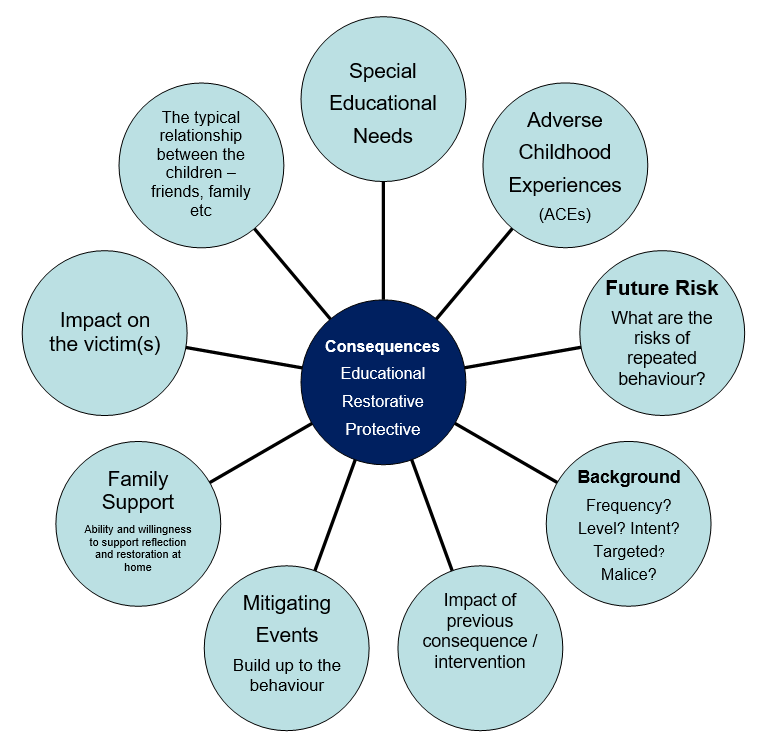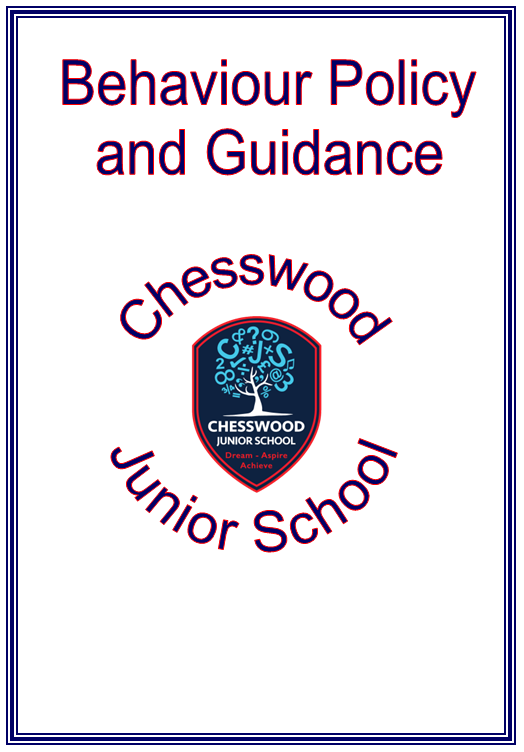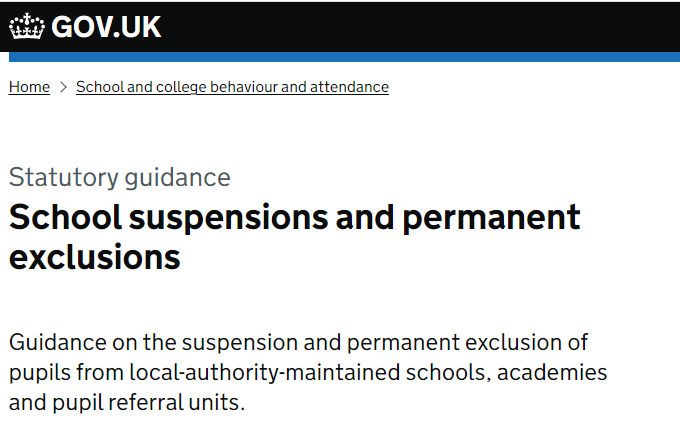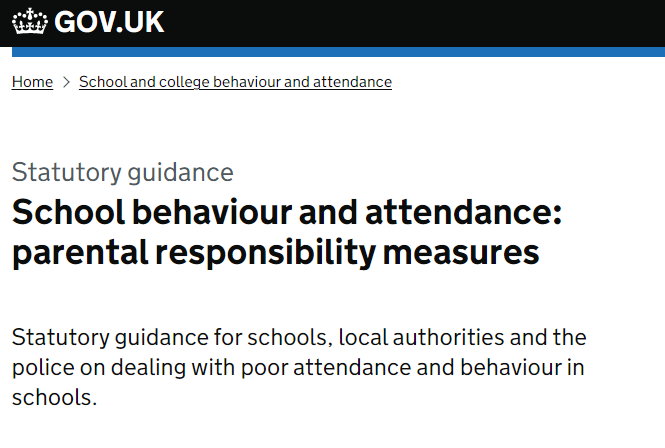Behaviour Management Policy
It is the primary aim of this policy to support the school community in aiming to allow everyone to work together in an effective, positive and considerate way. This page outlines key aspects of our behaviour policy. To access the full behaviour policy, please scroll down.
Key Principles
Respect |
To support the school community in aiming to allow everyone to work together respectfully in an effective and considerate way. |
Inclusion |
In order to achieve expected standards of excellence all children and staff, regardless of gender, culture, language, socio-economic background, disability or special educational needs are expected to take a full, positive and active role in all aspects of school life – we are an INCLUSIVE school. |
Excellence |
Strive to achieve excellence in academic achievement and social & emotional development for all children so that they leave this school with the confidence and ability to take advantage of future opportunities and become good citizens. As such, it is imperative that all individuals within the whole school community manage their social and emotional regulation effectively so that all children can thrive and, attend with without fear or anxiety. |
Positivity |
Promote a positive ethos, built on a shared commitment to displaying courtesy, care and kindness at all times to all people within the school and wider community, regardless of difference and in preparation for being a good citizen. |
Partnership |
To develop an active partnership with parents as an aid to promoting good behaviour. This means involving parents at an early stage if any problems develop. |
Resolution |
When unacceptable behaviour occurs we will aim to work closely with the children and parents to resolve the difficulty quickly and ensure disruption to learning and confidence is minimal both for the child and others within the school community. |
Equity |
We treat all children fairly and apply this behaviour policy in a consistent way. However, fairness is not about all children getting the same (equality), instead it is about everyone getting what they need (equity). |
Celebration |
The school recognises and celebrates positive behaviour. We believe that this process of constant reinforcement of expectations significantly reduces risks, particularly the frequency and intensity of unacceptable behaviour. It also embeds a sustained culture of courtesy, care and kindness that allows children to thrive and ‘be the best they can be’. |
Proactive |
Behaviour management in school is primarily proactive; with adults modelling and teaching prosocial and positive learning behaviours building a culture where children strive to demonstrate such behaviours intrinsically. |
InterventionReflectionRestoration |
We never set out to punish a child for any inappropriate act – this policy is not based on retribution. Childhood is a time to learn academically and socially and emotionally. In that same way we would seek positive intervention for a child struggling with maths calculations or spelling; we will seek positive intervention when unacceptable behaviour occurs. This should not be confused with a school that looks the other way or is unwilling to take robust action. Our response to incidents where there has been unacceptable behaviour will be:
|
Proactive Strategies
Know and understand your pupils and their influences |
||||
| Be aware of negative experiences that influence behaviour. (ACEs) | Adults proactively seek to build positive relationships – get to know the child and their interests. | Meet and greet (at the classroom door) is an established and visible routine. | Establish, Maintain, Restore (EMR) is an important framework to support positive relationships. | |
Teach learning behaviours alongside managing misbehaviour |
||||
| Emotional: relationship with self | Social: relationship with others | Cognitive: relationship with curriculum | Praise and positive reinforcement | |
|
|
|
|
|
Classroom management strategies |
||||
| Routines and visible consistencies | Whole school routines | Community Code | Time Management | Celebration & reward |
| Establish clear classroom routines – teach / practice / embed |
|
Use the Bright Sparks code as a consistent expectation – use the language as a script. | Communicate and adhere to clear time so children understand the expectations |
|
Reactive Approach
'You can’t teach children to behave better by making them feel worse. When children feel better, they behave better.’ Pam Leo
The overwhelming majority of behaviour management in school is proactive and will impact positively on the good behaviours the overwhelming majority of children demonstrate in school, out of school and online. However, we recognise that when negative (unsocial and anti-social) behaviours are demonstrated, clear and consistent action is required to manage these behaviours and maintain a safe and positive learning environment.
Consequences
When responding to negative behaviours, the following principles are key in deciding on the consequences necessary.
Consequences for negative behaviour must
- seek to support the victim (where there is one)
- ensure children get the opportunity to
- reflect on their behaviour
- make steps to restore the consequences of their actions
- reduce the risk of the behaviour repeating itself
- relate to the behaviour (for example a child would not be sent to supervised play for refusing to complete work)
- be focused on positive outcomes for all – not based on punishment
- take into consideration multiple factors
- previous incidents
- complicating factors – SEND / trauma / ACEs
- mitigating factors – eg what happened before the incident
- be communicated with parents – typically where the consequence is beyond an informal / minor action (eg corrective word / timer)
- not be humiliating or degrading by design or by accident e.g. listing children’s names on the white board with a sad face – this is public humiliation
When deciding on consequences for incidents of negative or anti-social behaviour, many factors need to be taken into consideration. None of these are designed to excuse the behaviours but to support identification of the most appropriate and effective strategies to enable high quality reflection and restoration whilst reducing any future risks.

Types of Consequences
Educational Consequences (Reflection)
These are consequences put in place by staff to help the child to learn, rehearse or teach about their actions to aid internalisation of pro-social actions to avoid repetition. They are designed to educate and support high-quality reflection.
Restorative Consequences
Restorative consequences are actions taken that enable the child to make steps towards putting things right. They support both the perpetrator (to move on and rebuild relationships) and the victim (to know that action is taken; that they feel supported by adults in acknowledging the behaviour will not be accepted; to support them feeling safe and happy moving forward).
Protective Consequences
Protective consequences are actions taken by staff in response to incidents of negative / antisocial behaviours. Their purpose is to ensure all pupils and adults feel safe within a positive learning environment with a primary focus on reducing the risk of repeated behaviour.
For further guidance on the types of consequences and examples of these in school, please see the behaviour policy.
Guide |
Link |
Behaviour Policy and Guidance |
|
School suspensions and permanent exclusionsGuidance on the suspension and permanent exclusion of pupils from local-authority-maintained schools Click on the image opposite or follow this LINK |
|
School behaviour and attendance: parental responsibility measuresThis statutory guidance is for:
Click on the image opposite or follow this LINK |



